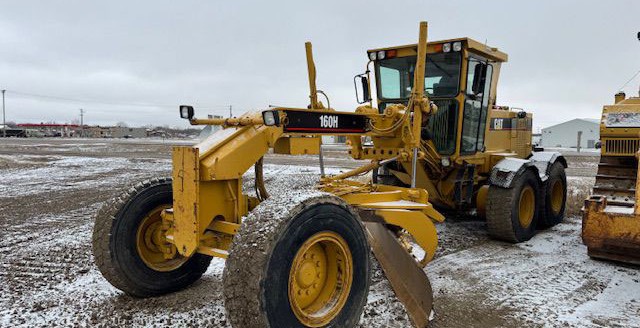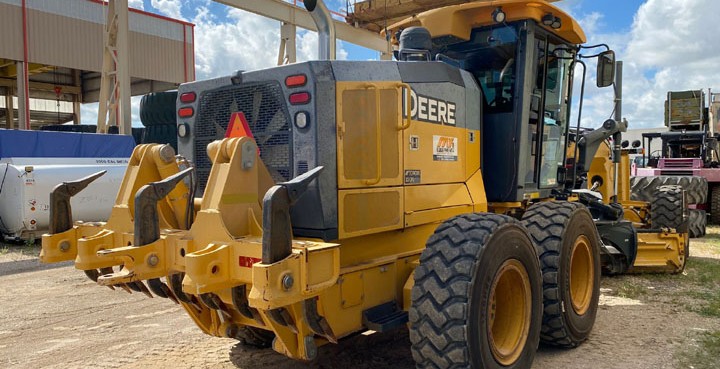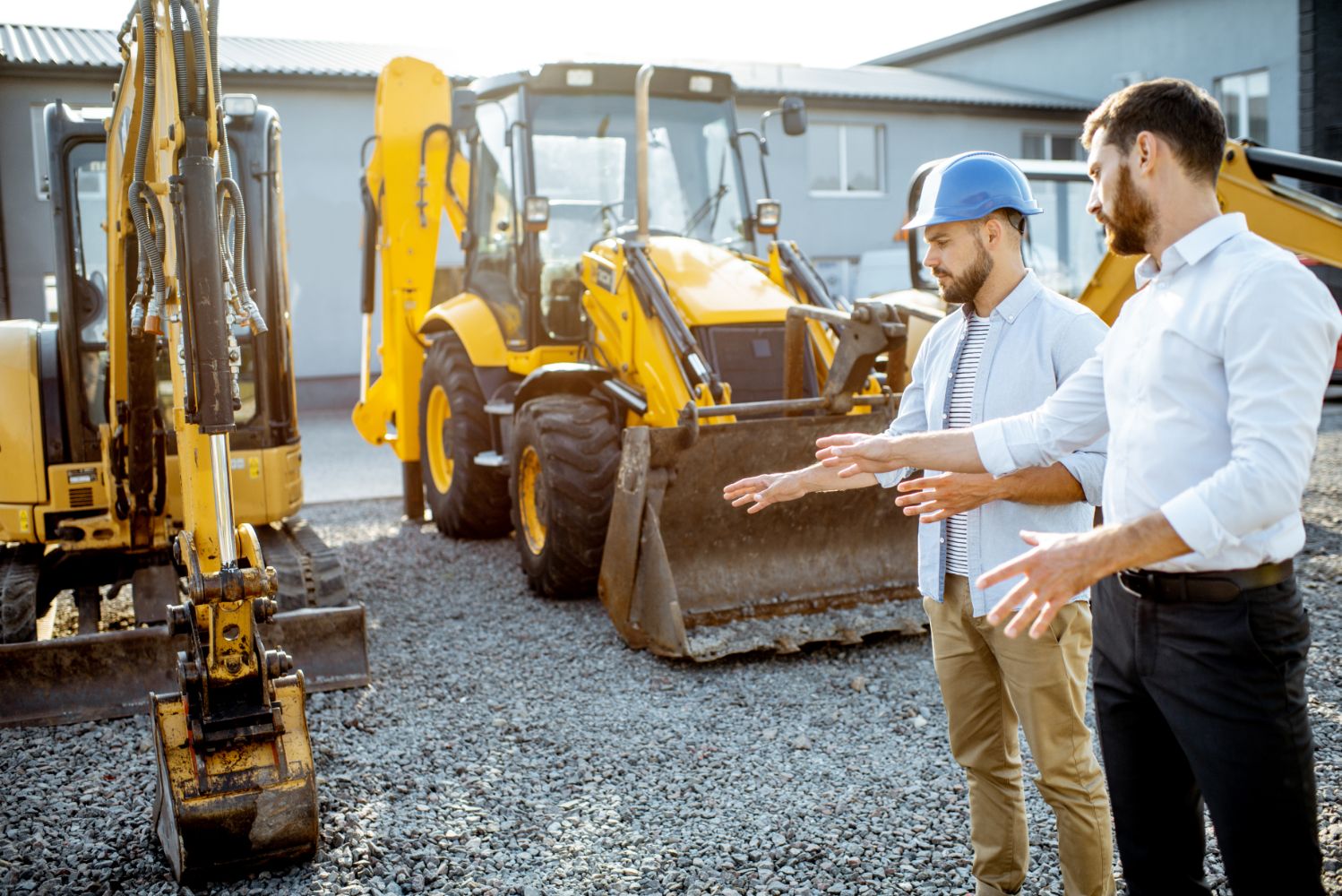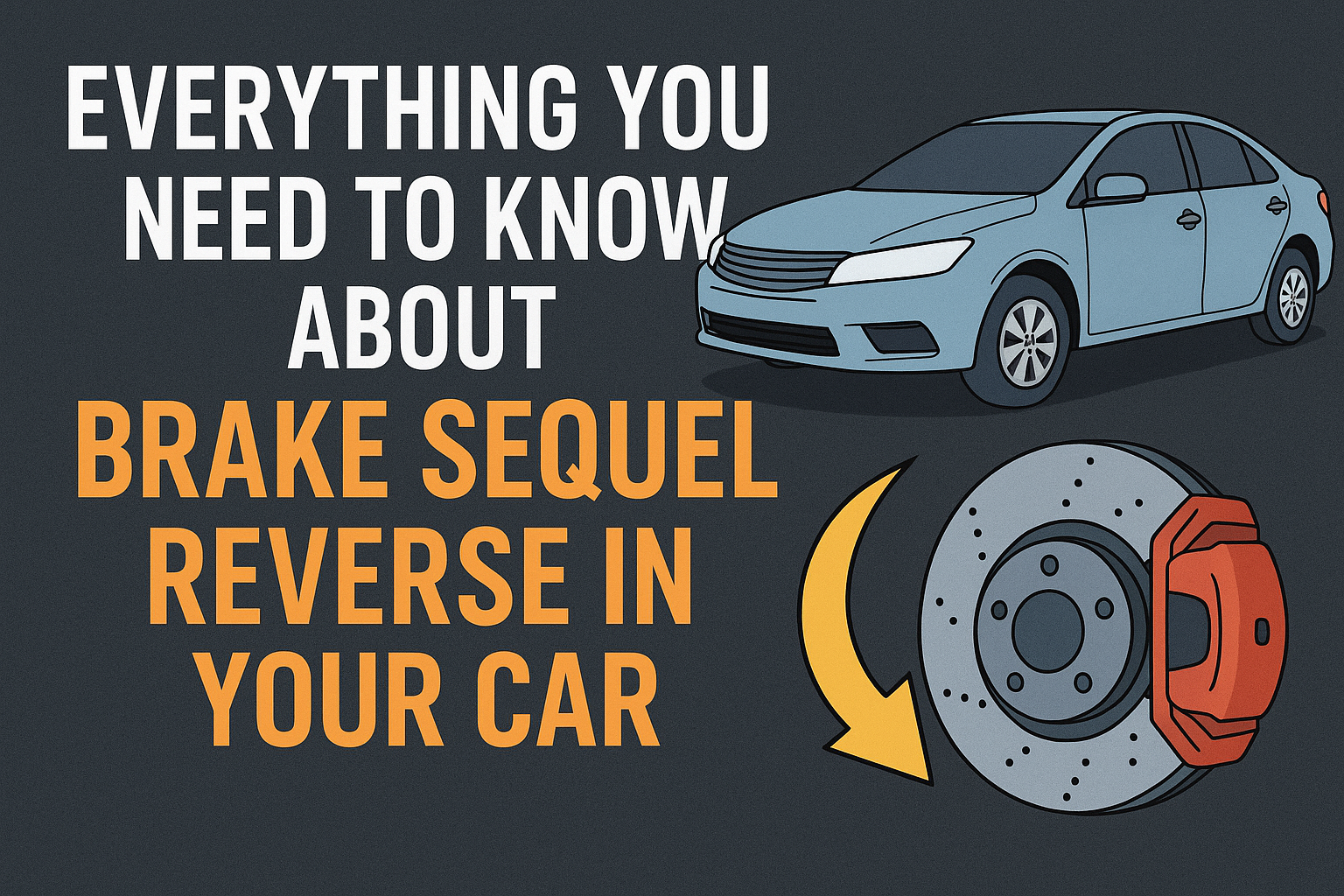Construction
Construction Equipment Industry’s Modern and Rapid Transformation

The vast industry of construction equipment is shaping into a more advanced and profitable marketplace because of the fast transformation being implemented through digitalization. The electric-powered and sustainable equipment is not only reducing expenses but also benefits the environment. These steps align with reducing the growing environmental concerns and make the construction safer and quicker. Not only the new models but used heavy construction equipment could also be utilized in modern ways equipping them with the latest technology. Advanced construction machinery offers several benefits which include:
Environmental Sustainability: Electric machinery produces fewer unwanted emissions that significantly reduce the carbon footprint of construction activities. This plays an important role in global efforts to reduce climate change and regulate environmental safety precautions.
Effective Operation: The motors of this type of equipment provide powerful motion that results in smoother and more responsive operation. Advancements in battery technology have provided extended durations of functioning, and shorter durations of charging, that boost productivity.
Noise Reduction: Electric equipment works with the same performance as equipment that uses other types of power and energy but does not contribute to noise pollution. This feature can make the machine very beneficial in construction projects in urban areas and makes the working environment of operators better.
Automatic Construction Equipment
Digital technology like sensors, AI, and machine learning techniques are used in this type of equipment such as automatic excavators and robotic pile drivers. The use of this machinery can offer the performance of difficult tasks with high accuracy, which reduces labor costs and improves safety. Automatic construction machinery offers the capability of performing tasks without direct human intervention. There is an increasing lack of trained workers in the construction sector. Automatic machinery can handle riskier or more force-intensive activities. It eases this problem by upgrading resource efficiency while completing projects more quickly. This makes human workers able to do other tasks and also minimizes the rates of incidents and injuries in construction zones.
Electronic Components in Construction Equipment
Electronic Control Units (ECUs): Electronic Controlled Units are holders of all the mechanical system controls and regulations. These devices function as the control module for construction equipment. They also control functions of the engine, hydraulics, and safety aspects based on data obtained from the sensors. It improves the management of operational flow and organizes tasks to minimize disturbances.
Advanced Sensors and Actuators: The construction equipment of the modern generation has a network of sensors that measure pressure, temperature, load, etc. These sensors offer current data and information. They assist in simple and precise control and operations that lead to improvement of time, efficiency, and safe functioning.
Battery Management Systems (BMS): BMS is an enhanced unit of componentry that can facilitate the monitoring and management of lithium-ion battery performance in a proper manner. This factor is virtually responsible for the growth of electric construction machinery. These systems include the capability of fast charging, discharging, and useful life of the equipment.
Digitalization in Construction Equipment
Telematics and IoT Integration: IoT makes equipment used in construction processes smart and they can be controlled and checked through the internet for diagnosing and inspecting. Telematics systems capture information that relates to the usage of the equipment, its location, and its condition at any time. This leads to effective predictive and smart management of the facility.
Building Information Modeling (BIM): According to the reports, BIM gives better planning and visualization and integrated cooperation in the construction stage than conventional methods. It is the functional and physical blueprint of a project. Incorporating BIM into construction equipment offers various advantages. This leads to the improvement of the positive effectiveness rates and minimization of errors.
5G Connectivity: The application of 5G technology improves the interaction of equipment and the main control system. It supports real-time data exchange and also enhances the efficiency of remote control. This connectivity is useful for implementing enhanced automation and safety on construction sites.
The impact of advancements in Construction Equipment
The construction industry is transforming as it adopts electronic and automatic machines, reshaping how construction activities are carried out. By promoting efficient and sustainable working.
Enhanced Safety
Automation and electrification in construction equipment significantly improve safety in construction Here’s how:
Lesser Human Intervention: Automatic machinery is installed in hazardous and isolated areas where workers are vulnerable to high risks. For instance, excavators or demolition equipment can handle unstable structures and minimize the risks of the accident.
Real-Time Monitoring: The electrical equipment is equipped with the latest sensors and cameras that provide options including obstacle detection, accident avoidance system, geofencing, and so on. This reduces accidents and at the same time provides feedback to the operators in real time.
Elimination of Human Fatigue: In repetitive tasks, automation removes the human factor and reduces the risks of burnout. It also prevents slow reaction time and bad decision-making.
Emergency Safety Protocols: Automatic equipment is capable of being programmed to shut down, or to sound alarms when working conditions are unsafe. This makes safety an active partner in the production process and thus prevents incidents.
Cost Savings and Environmental Benefits
Electrical and automatic equipment offers other long-term advantages like durability and reliability that make up for their initial high price. Electric equipment eliminates the need for gasoline or diesel, significantly cutting fuel costs. Charging from renewable energy sources and their smart use also reduces the costs of running the machine.
Electric motors have fewer moving parts from which they can offer lower maintenance costs. In contrast with internal combustion engines, their components are far less prone to wear and tear. These machines apply predictive maintenance technology to detect possible faults before they become critical.
Also, automation reduces the power requirement for manual operations on repetitive processes, which reduces the cost of labor but improves the efficiency attained. Machines that operate under controlled conditions are less likely to exert undue force on their components which makes them durable.
In the environmental sector, this technology is in line with sustainable development. Electric equipment has no on-site emission, that minimizes air pollution and helps in achieving emission-reducing targets across the globe. It has considerably low noise production when operating. This makes the equipment suitable for urban construction and improving societal relations. Accuracy in a self-executing process reduces material loss and maximizes the utilization of the resource materials including concrete, steel, and soil. Through the application of these advanced technologies, the business enhances cost-effectiveness, operations stability, and environmentally friendly status that leads to sustainable and productive construction.
Construction
7 Important Cautionary Measures with Used Motor Graders

Caution in the purchase or operation of used motor graders is not a suggestion; it is a requirement. These machines are important in roadwork, land leveling, and construction site preparation; however, they are secondhand and therefore have a history. Others might have been well-preserved, and others might conceal expensive problems behind their appearance. Knowing what to seek and how to keep them can be the difference between a brilliant investment and a disappointing spend.
1. Inspecting the Machine Before Purchase
Inspecting used motor graders properly before committing to them should be your initial step. A machine may be in great condition on the outside but be worn internally and thus perform poorly. Pay attention to the critical structures that determine its functioning and sustainability.
Key Areas to Examine:
- Hydraulic System: Look for leakages, torn seals, and pressure irregularities that may cause failure of operation.
- Blade and Moldboard: Check for cracks, bad welds, or uneven wear, which can interfere with grading.
- Articulation Joint and Frame: Check for bending, corrosion, or loose pins, which can interfere with structural integrity.
- Engine and Transmission: Listen for unusual sounds and examine smooth gear changes. Both are signs of mechanical fitness.
- Cab and Controls: All gauges, switches, and steering functions should be working.
A proper checkup will not only protect you against some unpleasant surprises during the maintenance, but it will also provide you with bargaining power with the seller.
2. Checking the Grader’s History
Each used grader has a tale, and being familiar with it aids you in evaluating its future dependability. A machine that only does light road maintenance, for example, may not be as stressed as one used in mining or on a large construction project.
Relevant Records and Verifications:
- Ask for elaborate maintenance and service records to ensure that they have received regular care.
- Compare wear patterns with hours of operation. Any discrepancies can be a sign of meter tampering.
- Understand the past working conditions of the grader; working with corrosive substances or in extreme conditions hastens wear.
- Look into any lapses in maintenance that might cause latent mechanical problems.
Such background information may tell us whether the grader has been well taken care of or just painted over and resold.
3. Evaluating Component Wear
The apparent wear to a machine can give you a lot of information about how that machine is actually performing. When dealing with used motor graders, such items as cutting edges, tires, and hydraulic systems are crucial to the efficiency of operation.
Important Things to Evaluate:
- Cutting Edges and End Bits: Too much wear in this area can impact the accuracy of grading and lead to higher replacement costs.
- Tires or Undercarriage: Wear patterns may indicate an imbalance in the tires or improper functioning.
- Hydraulic Cylinders and Pumps: Test pressure consistency to provide easy control.
- Drive Train: Check to see whether there is hesitation or slippage when changing gears, indicating potential internal damage.
Evaluation of these components can save thousands of dollars in future repair or replacement.
4. Electrical and Hydraulic Checks
Electrical and hydraulic systems are usually disregarded, yet they are crucial to effective and safe operation. Their inspection may not be conducted, thus causing hazardous failures in the field.
Before Operating:
- Check the lights, switches, and alarms to make sure they are operating properly.
- Check the battery terminals and the wiring.
- Check hoses for leaks and bulges, which might reveal weakness when subjected to pressure.
- Safety interlocks and backup alarms should be in operation to ensure the safety of operators and other workers around them.
These details are important in creating a safer operating environment and in minimizing downtime, which can be expensive.
5. Essential Post-Purchase Maintenance
After getting a good used motor grader, the real challenge of ownership is proper maintenance. Secondhand equipment needs a little more care to ensure it is working well.
Routine Practices:
- Exercise a regular lubrication regime for joints and moving parts.
- Change filters and fluids as per the manufacturer’s schedule.
- Wipe the moldboard with each use to avoid rusting.
- Conduct a daily walk-around to check for loose bolts, leaks, or flat tires.
- Record a diary of all services to monitor parts life.
Regular maintenance not only prolongs the life of the grader, but it also contributes to the resale value of the grader should you want to upgrade.
6. Operator Training and Awareness
A machine can only be as good as the man operating it. Operators need to be trained on how to use the grader and how to deal with its unique characteristics, particularly when it is a secondhand grader. Training will eliminate abuse, which causes premature wear.
- Create incentives to make operators aware of the initial signs of defects, including vibration or slow hydraulic reaction.
- Safe grading on uneven or wet surfaces should be reinforced.
- Educate them about pre-operation checks that should be done daily.
A knowledgeable operator will reduce risk and guarantee a more efficient project execution.
7. Best Practices for Purchasing Used
It is a question of where you purchase your machine, not what you purchase. Not all sellers are as transparent as they can be, and a bit of due diligence goes a long way.
Purchasing Used:
- Select certified dealers offering inspection reports or limited warranties.
- Do not use machines that lack service records or whose ownership is questionable.
- Make multiple comparisons to find a fair market price.
- Have a third-party inspector provide an objective evaluation of the purchase.
Reliable sellers support their assertions with paperwork and openness, characteristics that render ownership much more predictable.
Vigilance is the Key to Long-Term Safety and Performance
Being careful is not being afraid. It is being prudent. Contractors can make sure that the motor graders they use will provide quality services and good value by checking, repairing, and handling them properly. Preventing problems not only lowers repair costs but also ensures operator safety and a more streamlined workflow on-site. These measures are a checklist to help you make smarter, safer choices each time, whether you are buying your first grader or another addition to your fleet.
FAQs
Q1. How often should a used grader receive preventive maintenance?
A: In general, a used grader is recommended to go through preventive maintenance on a basis of every 250 to 500 operating hours, according to its conditions and workload. Always follow the manufacturer’s recommendations when changing the oil, replacing a filter, and checking it.
Q2. What are the key signs of major problems in a used grader?
A: Obvious leaks surrounding hydraulic lines, irregular transmission response, or an extreme amount of frame rust are significant indicators. These problems can point to neglect or internal damage, which is expensive to repair.
Q3. Is it safe to buy used motor graders from an auction?
A: It may be, but you have to do a good pre-bid inspection or hire a qualified technician. Auctions usually sell machines in their current condition, and therefore, it is always advisable to check out the condition before purchase.
Q4. Can an older used grader provide reliable long-term service?
A: Yes, when well kept. Even older graders with proper care, lubrication, and frequent replacement of parts can deliver years of consistent service and good grading performance.
Construction
John Deere 772GP Vs Competitors: Where It Outshines The Rest

Motor graders play a critical role in construction, as they provide the precision, efficiency, and dependability of work on complicated construction projects. Contractors have a wide choice of which model to invest in, but the John Deere 772GP is still popular in the marketplace. It is a combination of high performance, high technology, and operator-friendly design, which makes it one of the most demanded graders nowadays. This type of a comparison with its competitors draws out not only its strengths but also those that bring it a good investment.
Power Delivery Performance
The John Deere 772GP delivers outstanding performance thanks to its engine design and consistent power output. It handles demanding jobs easily due to its powerful horsepower and precise control. The 772GP achieves this balance, and contractors value both its ability to deliver strong power and maintain smooth operation. It usually has an advantage over related models when processing large workloads. Competitors offer capable machines, but none match the 772GP’s unique balance of power and precision.
High Technology Integration
John Deere has invested in technology that enhances grading efficiency. The 772GP features automated systems and advanced tools that boost accuracy and reduce operator fatigue. Competitors also provide technology-based solutions, but none have the seamless integration of the 772GP. It allows even less-experienced operators to achieve dependable results by simplifying complex operations. Such emphasis on intuitive technology ensures consistent productivity, regardless of job requirements.
Comfort And Usability Of Operator
Operator experience directly affects overall job site productivity, and the 772GP focuses on comfort. Its cabin design provides better visibility, responsive controls, and a layout that minimizes fatigue during long shifts. While competitors also offer functional cabins, Deere places stronger emphasis on operator comfort and ergonomics. With a grader built around operator needs, companies enjoy reliable performance throughout long-term projects.
Cost Saving And Fuel Efficiency
Fuel consumption is a crucial factor in operating costs, and the 772GP performs well in this respect. Its engine and design maximize fuel efficiency without compromising performance. When fuel use is reduced without affecting output, contractors save significantly over the machine’s lifetime. Other competitors often compromise between power and efficiency, but Deere avoids such trade-offs.
Service Support And Dealer Network
One of the 772GP’s biggest advantages is Deere’s extensive dealer and service network. The availability of quality components and skilled workforce support reduces downtime and builds long-term confidence in the machine. Competitors may offer good machines, but they often lack the widespread service support that guarantees regular maintenance and quick solutions. Deere’s reliable service network maximizes uptime and reinforces the value of owning the 772GP.
Total Cost Of Ownership Benefit
Although the initial price of the 772GP may seem higher than other options, its overall cost of ownership is often lower. Its fuel efficiency, durability, and strong resale value lead to long-term savings. Other graders may have lower upfront costs but often consume more fuel, depreciate faster, and incur higher maintenance expenses that raise lifetime costs. The Deere 772GP provides contractors with a machine that supports profitability throughout its service life.
Sturdiness And Construction Workmanship
- The 772GP is known for durability, supported by its heavy-duty components.
- Quality construction reduces downtime by minimizing frequent repairs.
- Competitors also build strong machines, but Deere’s balance of durability and serviceability keeps it ahead.
Flexibility In Multiple Uses
- The 772GP is versatile to other tasks like road work, site preparation and grading.
- The attachments also make it more versatile to a contractor.
- Rivalry can perform single tasks properly, however, the flexibility of Deere increases its total value.
Resale Value And Market Demand
- Strong resale value makes the 772GP a financially sound long-term investment.
- Its high market demand reflects its reliability and reputation across industries.
- Competitors tend to lose value more quickly, making Deere the better investment for resale.
Maintenance And Longevity
The John Deere 772GP is designed for long-term reliability, with components built to withstand heavy workloads. Regular maintenance is straightforward, and the machine’s durability reduces the frequency of major repairs. Competitors may require more intensive upkeep to maintain performance, making the 772GP a practical choice for contractors focused on long-term productivity and minimal downtime.
Operator Training And Ease Of Use
The 772GP focuses on providing operator friendly controls and user friendly systems that reduce the learning curve and enhance efficiency. The use of advanced features like automated grade control and clear display panels enable the operator to operate at high precision even in harsh conditions. Competitors can provide us with functional designs, however, the Deere orientation towards usability provides the company with the level of results and minimizes the chance of operational errors. Ergonomic seats and variable controls also contribute to comfort on prolonged shifts, which helps the operators to be concentrated and productive. The usability and comfort of this makes the 772GP a favorite in hectic work areas.
Overview
The John Deere 772GP is not just another motor grader. It surpasses most competitors in performance, fuel efficiency, durability, and resale strength. Its advanced technology and operator-oriented design deliver measurable benefits on job sites. Contractors who choose the 772GP gain a machine that balances short- and long-term returns. With so many options on the market, this grader consistently stands out as a smart choice for construction projects.
FAQs
Q1: What makes the John Deere 772GP stand out of the competition?
It incorporates a powerful engine, sophisticated technology and comfort of the operators in a single machine.
Q2: Is the 772GP fuel efficient?
Yes, it offers poor consumption of fuel without performance.
Q3: Does that mean that the 772GP can be applied to various construction projects?
Ok, it is multifunctional and can be used in various applications.
Q4: How durable is the 772GP?
It is constructed using tough materials that prolong the service life and reduce downtimes.
Q5: Does the 772GP re-sell well?
Ok, it commands excellent market demand and resale value.
Construction
High-Tech Sustainability in Modern Heavy Machinery For Sale

The idea of sustainability is no longer peripheral in the construction and industrial industries; it is becoming the norm. The shift towards greener solutions is motivated by the necessity to find a balance between performance and responsibility for contractors, manufacturers, and fleet operators. The same change is noticed in Modern Heavy Machinery For Sale, which incorporates modern technology with environmentally friendly innovations. Sustainability has influenced the future of machines that will be designed based on performance and efficiency, including electric powertrains and recyclable materials.
The Push Towards Sustainable Heavy Machinery
The push toward sustainability in heavy equipment is being fueled by several factors:
- Regulations and compliance: Governments around the world are increasing emissions standards. Manufacturers are forced to innovate to comply with these new rules.
- Increasing fuel prices: As fuel prices fluctuate, efficiency has become a major consideration in the choice of equipment.
- Client and investor requirements: An increasing number of companies demand projects that demonstrate their sustainability ideals, which is driving contractors toward environmentally conscious solutions.
- Competitive advantage: Sustainable machinery can be used by companies to be competitive in the bidding process and project delivery.
All these economic, regulatory, and social pressures have made sustainability a necessity, not an option.
Hi-tech Powertrain and Energy Solutions
The powertrain of machines is one of the greatest areas of innovation in terms of sustainability.
- Hybrid engines: Hybrid engines combine traditional diesel with electric support, using less fuel.
- Complete electrification: Battery-powered excavators and loaders are gaining popularity, especially in urban projects where noise and emissions are limited.
- Renewable integration: Some manufacturers are experimenting with solar-assisted charging to increase battery life.
- Specialized uses: Electric compact machines are especially suited to indoor construction and limited job sites.
These innovations demonstrate that sustainability is not about making tradeoffs in performance but about rethinking how power is delivered.
Intelligent Technology That Leads to Efficiency
Technology is transforming the way fleets are managed in daily operations, making them more efficient and reducing waste.
- Telematics and IoT: These solutions track fuel use, machine condition, and operator actions in real time.
- Maintenance by AI: Predictive analytics help prevent expensive breakdowns by warning managers about problems before they escalate.
- Remote monitoring: Fleet managers can monitor numerous machines on one dashboard to optimize use and minimize idle time.
- Carbon tracking: Data systems now calculate a company’s actual emissions output, assisting in sustainability reporting.
The smarter the machine, the less wasteful it will be, both in energy and in money.
Innovation of Materials for a Greener Future
Sustainability applies not only to fuel but also to machine components.
- Lightweight alloys: Reduce machine weight, making them more efficient and consuming less fuel.
- Recycled materials: Many manufacturers are using recycled steel and plastics in their equipment.
- Environmentally friendly fluids: Biodegradable lubricants and hydraulic fluids are becoming less hazardous.
- Design recyclability: End-of-life planning ensures that parts and materials can be reused or recycled.
This strategy shows how manufacturers are thinking beyond the use phase of a machine, focusing on its entire lifecycle.
The Main Advantages of High-Tech Sustainability in Heavy Machinery
Sustainable solutions offer long-term benefits:
- Lower operating costs.
- Improved fuel efficiency.
- Reduced carbon footprint.
- Extended machine lifespan.
- Increased resale value due to demand for sustainable models.
These benefits are not only theoretical; they directly affect project budgets and profitability.
Challenges to Adoption
Naturally, the move toward sustainability has its challenges.
- Initial expenses: High-tech sustainable machines are expensive upfront.
- Infrastructure constraints: Charging stations or alternative fuels are not always available on job sites.
- Training needs: Operators and mechanics need new training to use advanced systems.
- Balancing performance: Environmentally friendly solutions may struggle to meet the power requirements of large-scale projects.
Despite these hurdles, steady innovation is making sustainable equipment increasingly available.
Northern Rock Future of Heavy Machinery For Sale
The future lies in sustainability and smart technology, which continue to be integrated.
- Growth of fully electric fleets.
- Interoperability with computerized construction sites.
- Expanded use of rental and resale catalogs of sustainable machinery.
- Development of hydrogen fuel cell-powered heavy equipment.
Contractors interested in Heavy Machinery For Sale will likely find more models offering efficiency, lower emissions, and high performance.
Overview
High-tech sustainability is shaping the future of construction and industrial processes. Every aspect of heavy equipment is evolving, from cleaner power sources to smarter technologies and greener materials. The market of Heavy Machinery For Sale is not only about raw power anymore, but also about machines that meet the new demands of efficiency and environmental care. For contractors and fleet operators, this is not only about compliance but about moving toward a smarter, greener, and more profitable future.
FAQ
Q1. What is the role of high-tech sustainability in reducing operating costs in heavy machinery?
A: Smart technologies enable sustainable machines to save fuel, prolong service life, and maximize resources, which decreases costs in the long run.
Q2. What are the most popular sustainable attributes in Heavy Machinery For Sale today?
A: New trends include hybrid engines, electrification, telematics, biodegradable fluids, and recycled materials in modern models.
Q3. Do electric heavy machines have enough power to run large-scale projects?
A: Yes, though they are more common in urban and mid-scale projects. Hybrid or hydrogen-powered models are also emerging for large-scale operations.
Q4. What considerations should contractors make before investing in sustainable equipment?
A: Contractors should consider initial expenses, infrastructure such as charging stations, project requirements, and the long-term payoff.
-

 Construction3 months ago
Construction3 months agoWhat Your Used Motor Grader’s Previous Job Tells You About Its Future
-

 Automobile4 months ago
Automobile4 months agoHow John Deere Motor Graders for Sale Address the US Labor Shortage
-

 Automobile2 years ago
Automobile2 years agoJeddah Airport to Makkah Transport: A Hassle-free Journey
-

 Construction5 months ago
Construction5 months agoCaterpillar’s Heavy Machinery for Sale: Drop in Q1 2025
-

 Construction4 months ago
Construction4 months agoMaintenance Costs of Owning a Used Volvo Motor Grader
-

 Education3 years ago
Education3 years agoHow to Support Student Mental Health in the Classroom
-

 Construction3 months ago
Construction3 months agoWhy Used Motor Grader Demand Is Rising in Developing Countries
-

 Technology1 month ago
Technology1 month agoAI Detecting Technology – Preserving Authenticity in the Digital Frontier



